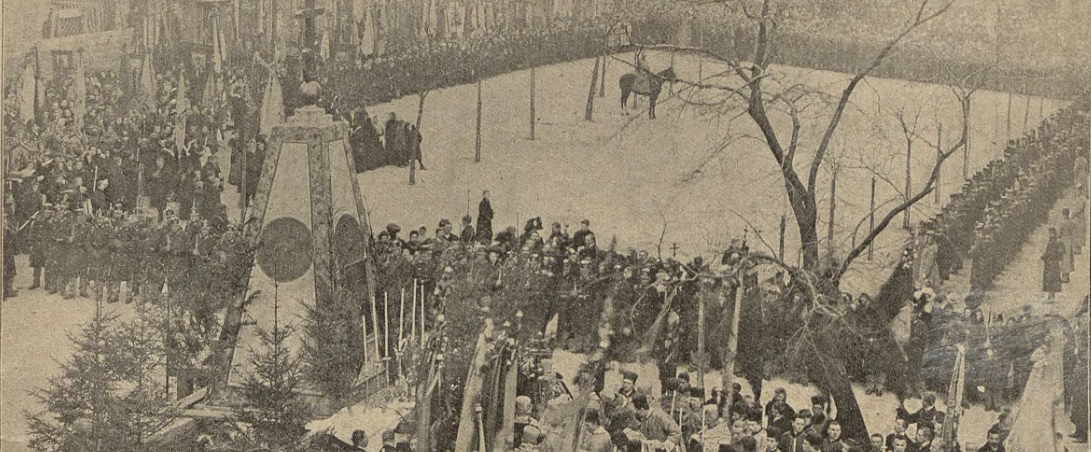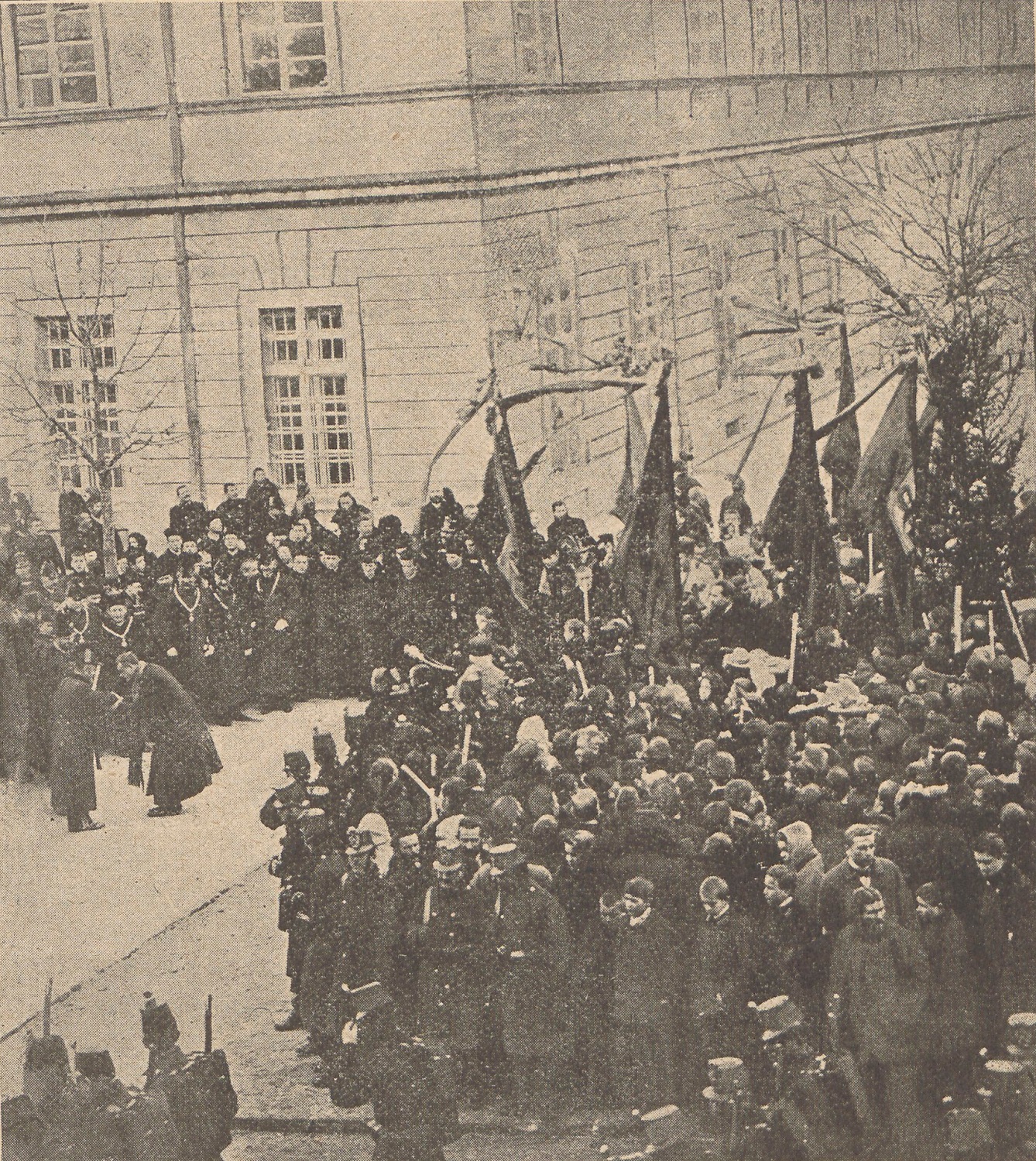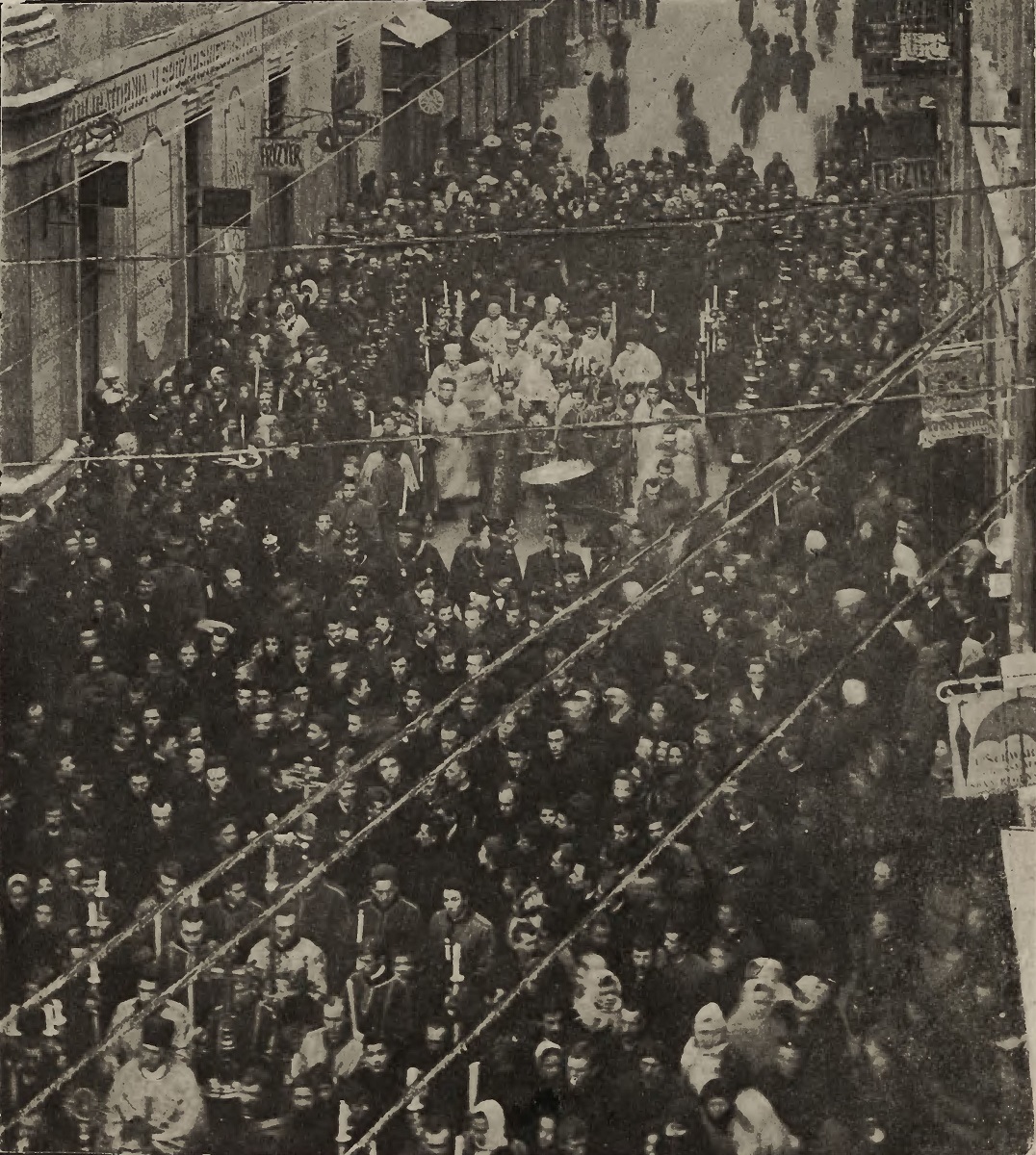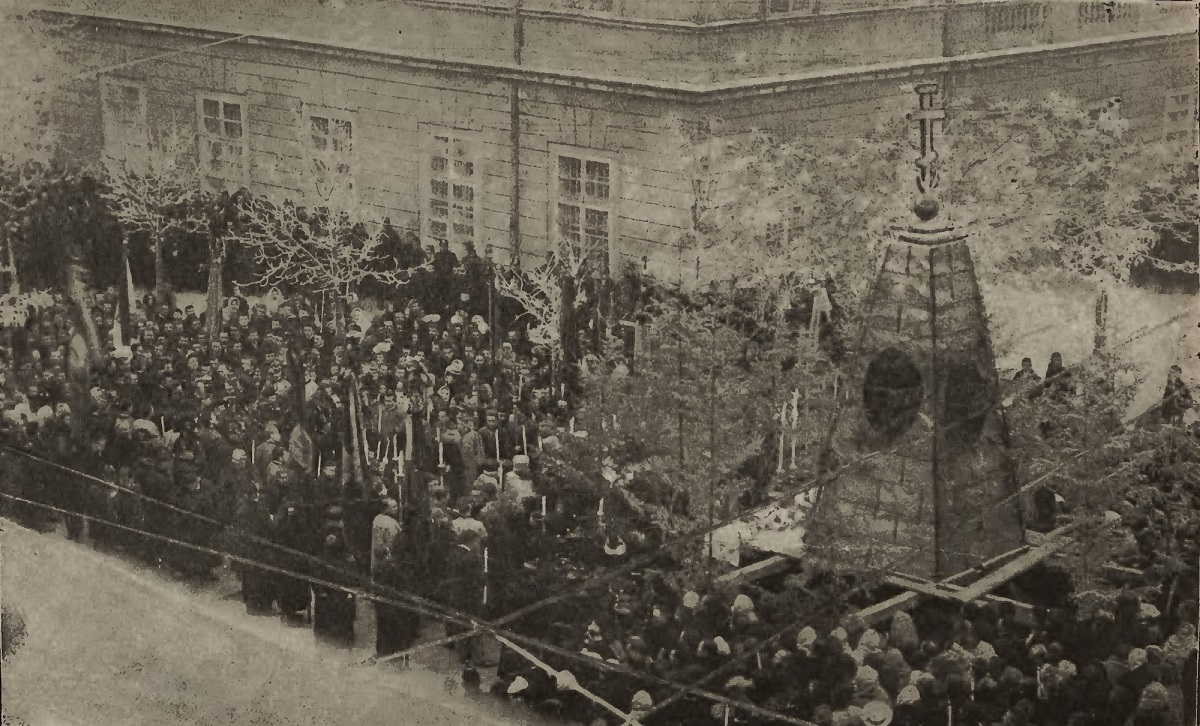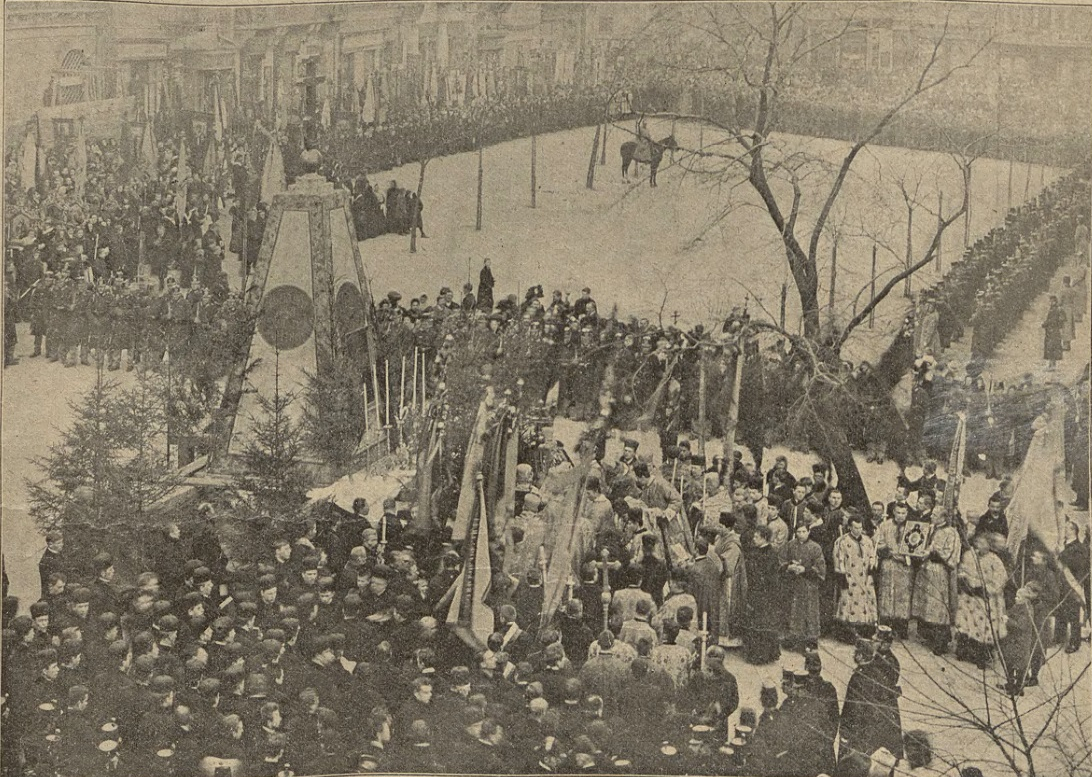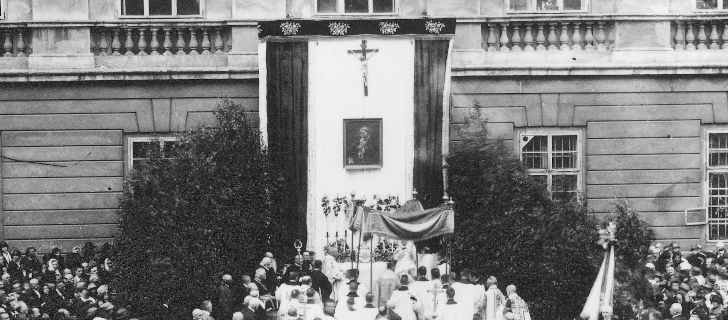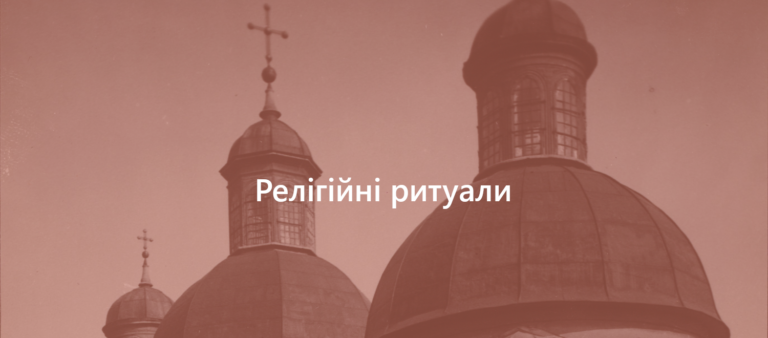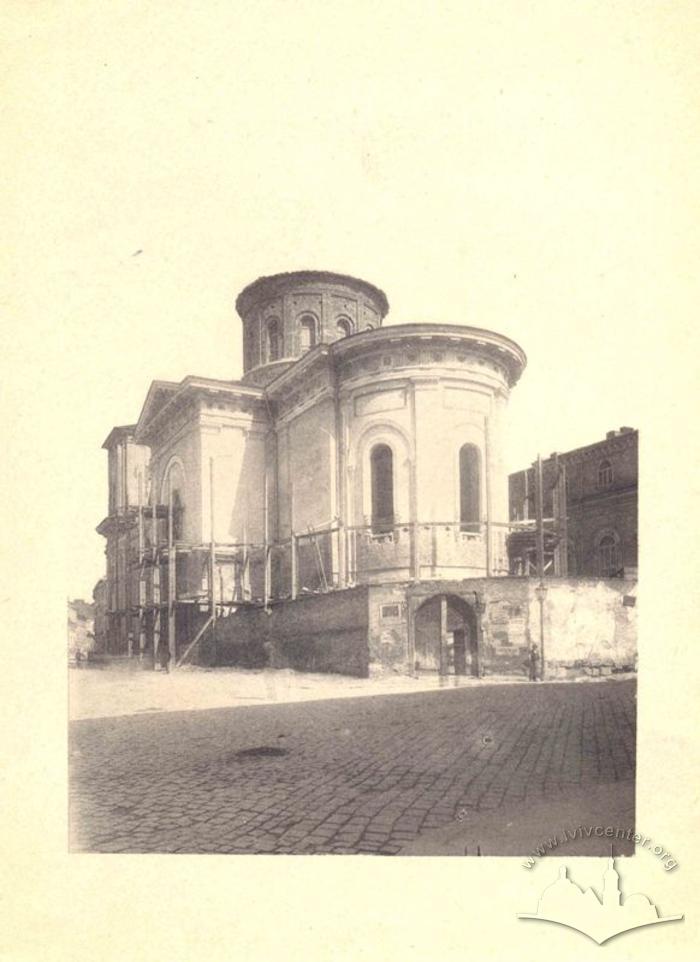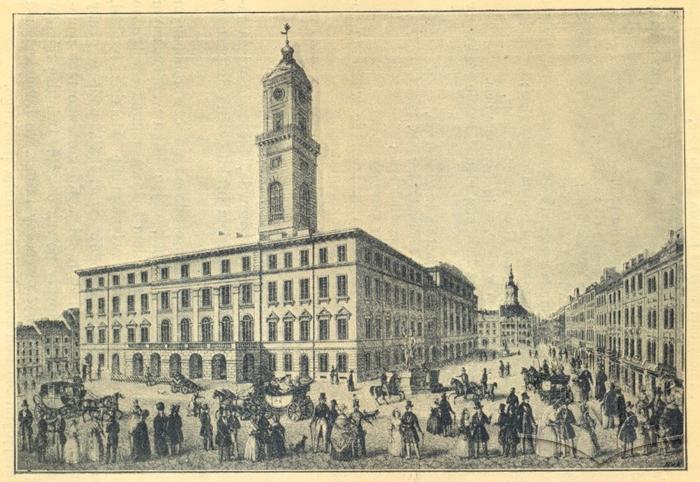The most significant annual religious celebrations held by Greek and Roman Catholics in Lviv were the Consecration of Water (Epiphany) and Corpus Christi. In spite of their apparently purely religious content, they had a distinctly national character and were interpreted as "Ruthenian" and "Polish" feasts, respectively.
* * *
The celebration of Epiphany on January 19 (according to the "Ruthenian" calendar) was the most massive regular (annual) celebration organized by the Ukrainians in Lviv. For Ukrainian holidays, this celebration at the level of the city (as well as the state) was rather an exception, since only holidays according to the Gregorian (in the case of Eastern Galicia, "Polish") calendar were considered days off. On this day, the first persons of the city and the province joined the celebration, and in the case of "Ruthenian" events this also did not happen often.
After the service in a Greek Catholic church, the clergy and believers used to go to the Rynok square, where they consecrated water in one of the fountains (or "wells", as they were called back then). After the consecration, there was a solemn procession on the square around the City Hall with the participation of priests, members of church brotherhoods and parishes, and lots of children with candles. The military of the Lviv garrison were also involved in the event: an orchestra for musical accompaniment and infantrymen for the traditional salute. In spite of the large number of people, all the events were over before noon, and the normal working day was then resumed in the city.
In 1907, for example, the liturgy was celebrated in the Transfiguration church, and the consecration of water was held in the "well" close to Krakivska Street. In addition to the clergy, the governor, the marshal of the Provincial Diet (Sejm) wearing a Polish national costume, the city president and other representatives of the regional, city and military authorities participated in the celebrations, as well as a battalion of the 95th Infantry Regiment and a military band. In total, according to the Ukrainian press, "several tens of thousands" of people took part in the celebration.
In 1913 and 1914, liturgies were again celebrated in the Transfiguration church presided personally by Metropolitan Andrey Sheptytskyi. Water was consecrated in the "well" located close to Grodzickich Street (now Drukarska Street). The authorities were represented by the governor, the provincial marshal, the head of the Provincial Court, the vice president of the governor's office, the vice president of the Provincial School Council, rectors of the university and polytechnic, the city president, the police director and others.
Despite the purely religious nature of the feast, there were frictions and misunderstandings. Thus, in 1913, during the festive ceremony, the city authorities did not stop tram traffic through the Rynok Square. The editors of the newspaper "Dilo" interpreted this as a manifestation of Polish anti-Ukrainian policy. Trams with passengers stopped in front of the crowd and waited until the end of the festivities.
